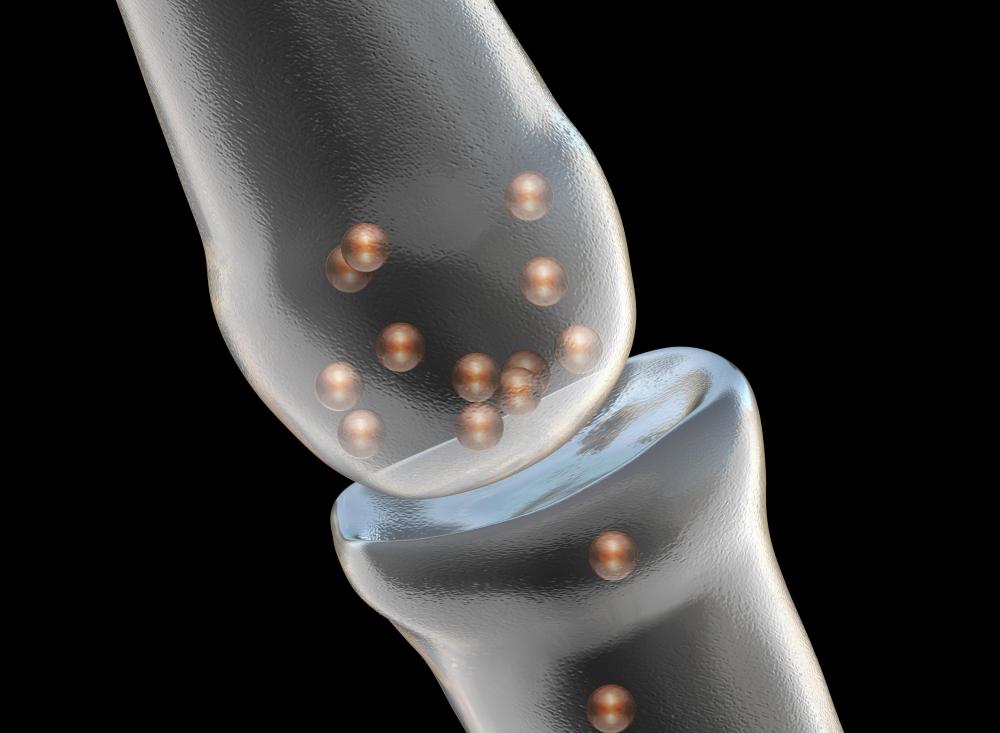At TheHealthBoard, we're committed to delivering accurate, trustworthy information. Our expert-authored content is rigorously fact-checked and sourced from credible authorities. Discover how we uphold the highest standards in providing you with reliable knowledge.
What Is an Inhibitory Postsynaptic Potential?
An inhibitory postsynaptic potential (IPSP) is a signal sent from the synapse of one neuron, or nerve cell, to the dendrites of another. The inhibitory postsynaptic potential changes the charge of the neuron to make it more negatively charged. This makes the neuron less likely to send a signal to other cells.
When a neuron is at rest, or not affected by any signals, it has a negative electrical charge. An inhibitory postsynaptic potential hyperpolarizes the neuron, making its charge even more negative, or further from zero. An excitatory postsynaptic potential depolarizes the neuron, which makes its overall charge more positive, or closer to zero.

Changes in the electrical charge of the neuron are caused when neurotransmitters, chemicals that nerve cells use for signaling, are released from a nearby cell and bind to the neuron. These neurotransmitters cause gated ion channels to open, allowing electrically charged molecules to flow in or out of the cell. An inhibitory postsynaptic potential is caused by either positively charged ions leaving the cell or negatively charged ions entering it.

A neuron is shaped like a tree, with a cell body at the top from which dendrites extend like the branches on a tree. At the other side of the neuron, a long trunk or axon extends toward other neurons. The axon ends in the axon terminals or synapses, which send chemical signals across a space called the synaptic cleft. These chemical signals bond to the dendrites of other neurons and cause excitatory or inhibitory postsynaptic potentials.

A single neuron may receive many signals from other neurons, some excitatory and some inhibitory. These signals are summed spatially and temporally at the axon hillock, a small hill at the beginning of the axon. The farther a signal has to travel to reach the axon hillock, the less effect it will have. Also, the longer the excitatory or inhibitory postsynaptic potential lasts, the greater effect it will have when it reaches the axon hillock.
If there are enough excitatory postsynaptic potentials to make the neuron much more positively charged, it will fire an action potential. An action potential is an electrical signal sent down the axon of the neuron. It causes the synapses at the end of the axon to release neurotransmitters, which send signals to other neurons. Too many inhibitory postsynaptic potentials can cancel out the effect of excitatory potentials, however, and prevent an action potential.
AS FEATURED ON:
AS FEATURED ON:













Discuss this Article
Post your comments